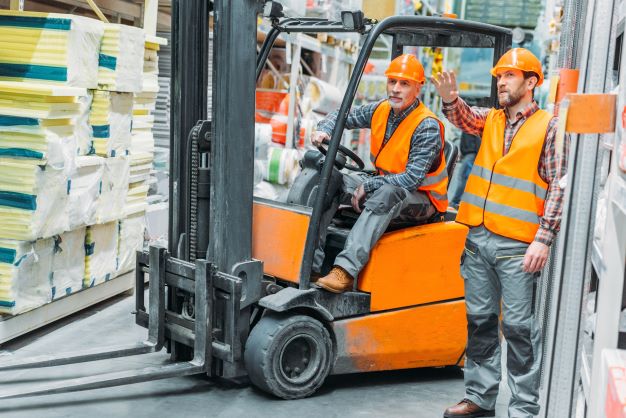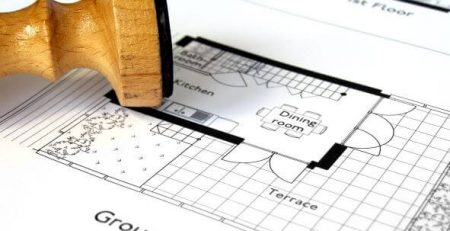Forklift Trucks Explained: An In-Depth Guide
A forklift truck is a type of vehicle that is used in industrial settings. They have a power-operated platform at the front and are named for the fork-like prongs on the platform. Depending on the model, they can be powered by a few different sources, usually a combustion engine or battery pack. There is a wide range of forklift models that are built and geared towards use in different environments and tasks. That being said, as a general rule, forklifts are used in the transportation of materials.
If you are considering whether or not your business could benefit from the use of a forklift, read on for all the information you will need.
The Uses of a Forklift
One of the main uses of a forklift is simply to lift heavy loads that would be incredibly difficult to move otherwise. Warehouse models can easily lift up to 5,000 pounds in weight, heavy-duty models can lift up to 25,000 pounds, and industrial models can lift even more; they can lift up to 35,000 pounds. Forklifts can save money and human resources, but they also offer a safer way to lift heavy goods without any risk to employees.
Once the load is lifted, it is the next job of the forklift to actually transport this cargo. They are not particularly fast, although they are quicker than walking. The mobility is one of their selling points as they are often used for their manoeuvrability. Smaller models do often have better agility than the bigger models, but they can’t lift as much weight.
Forklifts trucks also allow users to extend their reach. These models are mainly used indoors in spaces such as warehouses. They have an open compartment that allows for excellent visibility, and they have stabilised legs and forks that extend further. Operators can use them to precisely pick and move pallets of materials or stock. They are often designed to be more narrow to allow the truck to manoeuvre aisles easily.
Lastly, they also prove useful in order picking. They are used to access stock that otherwise would be difficult to get to. They can reach a height of up to 32 feet, and depending on their design, they can often handle more versatile loads.
Key Components
Forklift trucks consist of a variety of components that are needed to equip them better to carry out their tasks. The truck frame is perhaps the most vital component as it forms the base of the machine. All other key components are attached to the frame. The counterweight is usually made of cast iron, and it is fitted towards the rear. It is designed to counterbalance the load. The power source, this varies between models. They can be fuelled by petrol, diesel, natural gas, or batteries. The carriage is as it sounds, and it is fixed on the mast rails so that it can easily be moved. The mast itself refers to the vertical part of the forklift that lifts up and pushes down the loads. The mast consists of interlocking rails, which offers horizontal control.
How do They Work?
Forklifts often derive their power from entwining mechanisms. These can be either a pair of hydraulic cylinders or a pair of roller chain pulleys and a set of controls. With hydraulic cylinders, the lift handle is attached to an electrical air pump. When the handle is used, it triggers the pump, which draws in air through a filter and pushes it into a tube that reaches the hydraulic cylinders. The cylinder itself is comprised of a hollow tube that is closed at one end and has a flexible lubricated piston at the other. Air is trapped within the cylinder, which raises the pressure within it. The pressure reaches the piston and starts to generate an upward force. This then causes the piston to move up, increasing the volume of the gas and minimising pressure. To elevate the load and operate, simply pushes a handle which is the signal for the air to begin to pump into the cylinders. The handle is pulled back to lower the load, which signals the forklift to discharge the gas.
For forklifts that utilise a roller chain pulley system, the hydraulic pistons are attached to two vertical structures or masts. The forks that lift the load are attached to the body of the forklift by the pulleys whose fulcrum forms a gear towards the top of the mast. Then when the hydraulic pistons force the masts to move upward, the gears are pressed against the roller chains. This is because one side of the chains is fixed to the forklift frame, which is immovable, and so the only way the masts can move is upwards when the gears rotate, pulling the forks up. However, this system does let the forks go far out of the reach of the cylinders. If not for this system, then forklifts would require far taller cylinders for the load to reach the same height.
Forklift Controls
A forklift has two sets of controls, one for the steering and the other for the lifting. The steering control often works similarly to that of a golf cart; it has an acceleration pedal, a brake pedal, a steering wheel, two gears, one for going forwards, and the other reversing. However, most forklifts use rear-wheel steering, and so when the steering wheel is turned, the wheel at the rear axle begins to turn too. This is an intentional design feature that allows the operator a greater rotational degree and increased precision when handling cargo.
Usually, the lifting controls are comprised of two levers, one lifts up and down, and the other one enables the load to be tilted back and forth. The lifting controls work similarly to the lifting mechanism outlined above, but the tilting mechanism is slightly different. Instead of the air pressure forcing the piston up, it forces the piston away from the body of the vehicle.
Applications
There are many common industrial applications for forklifts, some of which are briefly touched upon above, such as their use in warehouses and retail environments. Other industries also utilise forklifts, some of which are unexpected, such as their popularity in farming and agricultural practices. It is also a familiar sight on most building sites and in construction in general, including home renovations and even landscape gardening. Lastly, it has uses in all areas of production and manufacturing. As there are so many different models and some are more suited to specific industries choosing the right forklift for your business needs can be incredibly difficult. Trucks Direct have a vast range of different forklift trucks, and several resources you can use to educate yourself on which forklift truck would best suit your business.
In Conclusion
The use of these machines simply makes it easier to lift and move products or materials wherever they need to go. It can save time and money as the need for manpower is greatly reduced. As well as being beneficial to business owners and managers they are also beneficial to the workers too. They make life easier, and often productivity is increased as there is less strain on the human workers, which would result from lifting the items manually.












